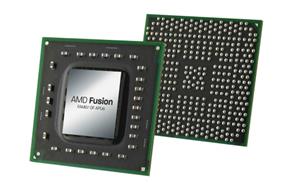Yesterday we have seen about motherboard and I have said that the motherboard has a built in graphics processor. That is nothing but on board graphics.
So what is an Onboard graphics?

You may think, “I’m not a gamer but why should I need that”.
No! Graphics processor is not just for gaming it’s much more.
The functions of a graphics processor are
1. It converts the data into video signal, for example a video file is stored in a computer as data or 0s and 1s, then it’s converted into video signal (Digital to Analog converter), so that it can be played in a monitor
2. It assists processor in graphical works. Don’t think it is something unrelated to you. If you’re using windows 7, graphics processor is needed even for maximizing or minimizing a window (if you use Aero effects).
3. Enables smooth video playback
4. Improves video quality
5. Improves quality in 3D modelling software and other software which uses OpenGL, OpenCL etc.
6. Enables smoother game play
Even if you don’t do highly graphics intensive tasks, you will need a Graphics processor one way or the other, at least to connect a monitor.
But the difference is how much raw power you need from them. That’s the deciding factor for onboard graphics or discrete (separate graphics card) graphics.
If you are a casual PC user then an onboard graphics will satisfy you. If you’re a serious gamer then you will need a powerful discrete graphics card.
But if you’re a mid-range computer user, who watches HD videos, play casual games, then you have a latest option called APU.
What is an APU?

Don’t just get carried away between an onboard graphics and APU, because an APU’s performance can be compared to an entry level or mid-range discrete graphic card.
But then you may ask me, Why can’t we go for a discrete graphics card then. Good Question?
There are a few reasons,
1. Power consumption is less in APUs, so no six pin connector is needed (6 pin connector is normally needed in Mid-range and High end graphic cards to supply additional power to them). But these 6 pin connector comes only with branded power supplies like Corsair, Cooler Master, Antec, Seasonic etc (They are costly, starts from 3000 Rs).
2. Cost is less
3. A PCIe slot is saved, which can be used for some other cards or for another graphic card for hybrid crossfire (combining or adding the power of APU with discrete graphics card).
4. If you buy an aftermarket cooler for processor then it cools APU too, but that’s not the case of a discrete graphic card
Intel has ‘HD 4000’ graphics processors in its Ivy Bridge processors, which is its latest series of processor as of Jan 2013. But they are capable of playing just full HD videos flawlessly. Intel claims that they can support up to 4K resolution, but I’m not sure of that. Beyond that you can play basic 3D games or some 3D resources hunger games at very low settings, for e.g. NFS RUN.
So if you want to get some powerful inbuilt graphics than ‘HD 4000’, you should go for an AMD APU.
Latest AMD APU is Trinity APU. It has HD 7000 series graphic processor inside it. It is equivalent to discrete HD 7000 series graphic cards.
For example if you have HD 7660 graphics processor inside an APU then it will perform slightly above HD 7650 or HD 6660 discrete graphic card. It means you can play most of the 3D games available in market at a decent resolution and settings.
Intel has powerful processor but not a powerful graphic processor, whereas AMD has a decent processor and powerful graphic processor. Individual APU’s performance will be compared later in processor reviews section.
When can you opt for an APU?
So if you cannot afford to buy a discrete graphic card then you can go for an APU, also if you can invest money in discrete graphic cards later, then you may add a compatible graphic card to it, to make hybrid crossfire (combining the power of both APU and discrete graphics).
Where APU is not an option?
But if you want to play games in Full HD resolution and high settings, then APU cannot be your option for now, because present day APUs are equivalent to mid-range discrete graphics cards only. A demerit in these AMD APUs are that they are not easily available, so if you can buy it at a reasonable price then it’s a good deal.

Why the AMD APU’s are not easily available?
AMD doesn’t concentrate on Indian markets well. But we can get AMD APUs in cities like Coimbatore or in online shops
Awesome!!
Thank You, Balaji
On board graphics means your GUI (Graphic User Interface) device is integrated into the motherboard.It allows you to have good graphics and not bog down your computers resources.
Accelerated Processing Units (APU) allow you to configure small-form-factor, long-battery-life PCs that consumers crave, while enabling the powerful, next-generation visual experiences that can set you apart and help create a competitive advantage in a hyper-competitive market.
Wow! It seems you’re really an advanced PC user